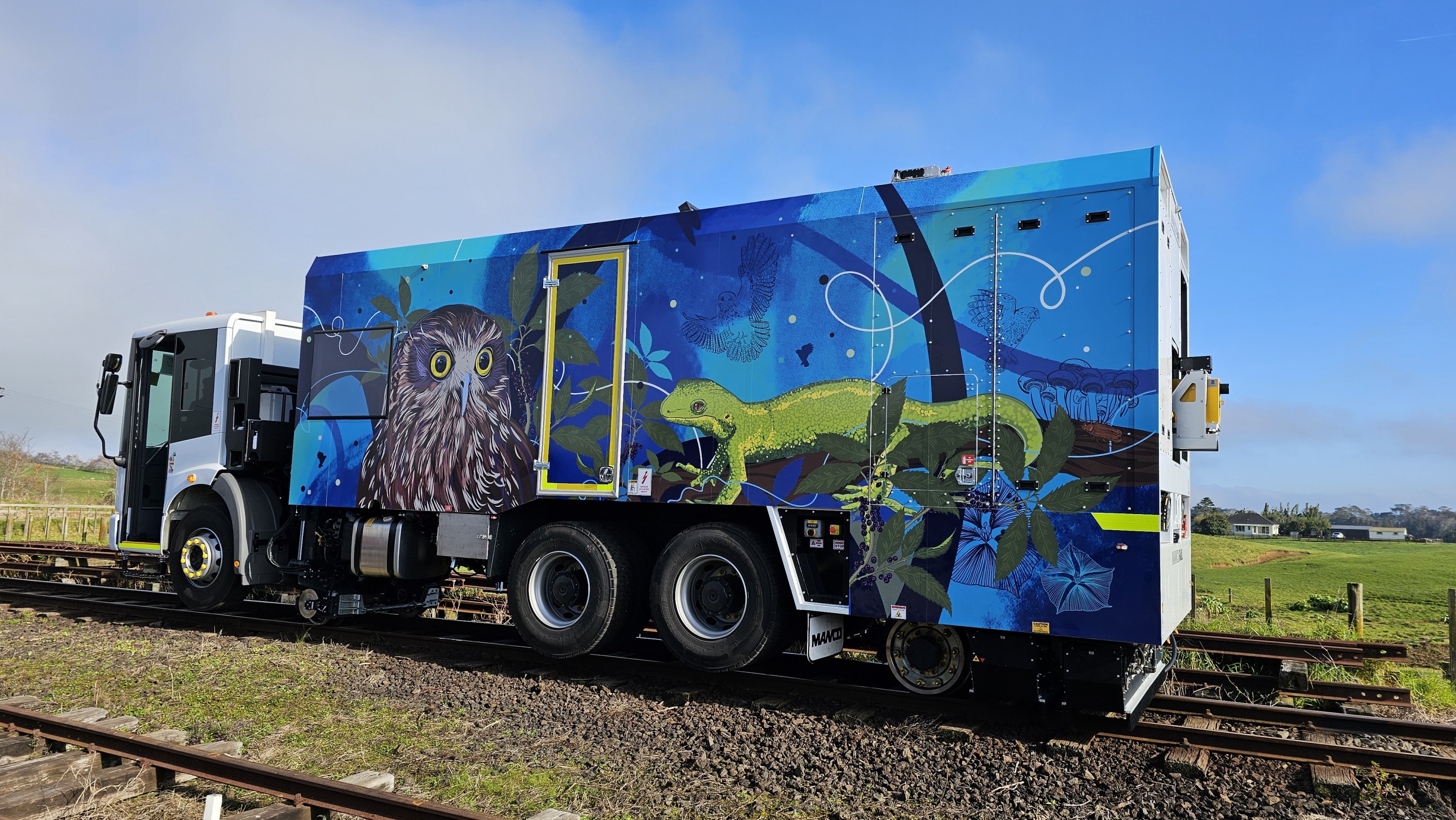Hydraulink fire suppression systems optimise safety of custom-built Manco track inspection trucks for KiwiRail

A custom-designed Manco hi-rail track inspection truck, built for KiwiRail, has been given a boost to safety with fire suppression installations from Hydraulink New Zealand.
“Manco is a leading engineering company with specialised experience in the rail industry, and they knew the importance of fire suppression when delivering these trucks to KiwiRail, so they spoke to us right from the start,” said Alan Priddy, Fire Suppression Sales & Senior Service Technician, Hydraulink New Zealand, who worked with Hydraulink Product Manager, Paul Randles, to install Muster fire suppression on the Manco-designed truck.
Hydraulink has decades of experience working in partnership with industries where fire suppression is vital, including markets such as waste management, logistics, rail, and anywhere that mobile or static machinery works could lead to a fire endangering lives and damaging equipment or stock.
The custom-designed Manco track inspection trucks use a Mercedes base and are used for scanning and measuring rail tracks as part of routine maintenance checks and upgrades by KiwiRail to keep all tracks safe and Standards compliant.
“The trucks also hold an onboard crew in the rear, further increasing the importance of having proper fire suppression technology in place,” said Priddy.
“Additionally, these vehicles often operate in tunnels and underground environments, where there is an amplified risk profile due to the enclosed space, limited escape routes for operational personnel, and nature of fire spread in enclosed spaces,” he adds.

A second fire suppression system was required in the rear, because the truck had a generator here.
Fire suppression technology
Hydraulink first installed external mounted tanks and fire suppression for the engine and common risk areas, but this job also had a unique additional requirement.
“The truck had a generator in the back, so this required a second independent system and tank mounted internally in the rear,” said Priddy.
Manco Engineering Group Senior Design Engineer – Rail, Craig Munro, says that having a quality fire suppression system in place was essential when providing the truck to a safety-conscious organisation like KiwiRail.
“Even though New Zealand doesn’t have one set standard governing fire suppression, we liked that Hydraulink fire suppression follows the Australian Standard AS5062-2016. This means all their products abide by strict quality assurance practices, so we know we are getting a quality system, installed by trained staff, and maintained for the lifetime of the product,” he said.
“Engines and generators provide additional sources for fire events, so having a dedicated fire suppression system in the rear was highly beneficial. Manco built bespoke bracketry so that Hydraulink’s solution could fit neatly without interfering with service personnel movements, and so that emergency egress points were not blocked.”

Manco’s rail inspection truck is designed to provide accurate scanning and measurement of rail tracks, so that KiwiRail can perform routine maintenance and upgrades in the most efficient way.
Environmental and safety technology
Both Muster fire suppression systems feature Linear Heat Detection (LHD) technology, which means there is no leakage of gas through the system. Hydraulink also added additional manual activation points, and alarm panels that can log data on discharge events and service history.
Priddy adds that both systems use low environmental impact Fluorine Free (F3) foam, which Hydraulink has been using on all Muster installs throughout New Zealand for the past six years.
“Compared with some older firefighting Aqueous Film Forming Foam (AFFF) types, F3 is a more sustainable option that performs the required task highly efficiently and safely,” says Priddy.
Regular service with total traceability
All fire suppression systems come with a recommendation to service them annually, with visual inspections at 3- or 6-month intervals.
“If a fire occurs, you want to know that the system in place will reliably activate as intended, delivering the best possible chance for operator and asset,” says Priddy.
“This was a unique custom-designed and built asset, so Hydraulink worked closely with Manco to deliver a tailored solution and installation that worked with their build schedule. We believe that when you push the button, you must have confidence the system will activate, so we service the systems to deliver reliability.”


